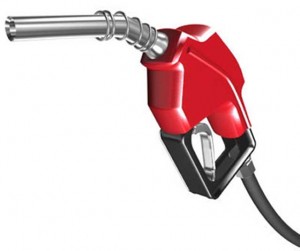The Environmental Protection Agency has approved a controversial proposal to increase the use of ethanol in the nation’s automotive fuel supply – but set strict limits on which vehicles can and can’t use what is referred to as E15.
Initially, only vehicles produced in the 2007 model-year or later will be permitted to fill up on E15, a term that refers to a blend of 85% conventional gasoline and 15% ethanol, an alcohol-based fuel typically produced from grains and other food crops.
Even with that limitation, “That represents more than 1/3 the gasoline consumption today” could be affected by the decision and converted from today’s limit of no more than 10% ethanol, explained EPA Assistant Administrator Regina McCarthy.
And by 2014, as older vehicles head to the junkyard, while newer models take their place, E15 could grow to as much as 50% of the fuel used in the U.S., the EPA official added.
The figures actually may grow even larger. Due to limited resources the environmental agency focused its initial study on relatively new vehicles. It is hoping to complete an expanded study, covering cars, trucks and crossovers produced as far back as the 2001 model-year, with a decision to come by sometime in November or December, according to McCarthy.
Notably, the decision to expand the use of E15 applies to all vehicles from the 2007 model-year on, and not just those labeled “FlexFuel.” That particular category is restricted to vehicles which have specifically been modified to be able to use a fuel blend that’s up 85% ethanol, and known as E85.
To ensure only the approved vehicles will fill up on E15 the EPA is preparing a new label that will go on gasoline pumps across the country advising motorists whether or not they can use the modified fuel blend.
While the proposal potential could generate demand for hundreds of millions of gallons of E15 annually, Asst. Administrator McCarthy acknowledged that the actually use of the gas/alcohol blend may be significantly less.
Refiners and individual station owners will have to evaluate their own capability to blend, distribute and pump E15. Alcohol fuels are more corrosive than conventional gasoline, and even the modest increase from a 10% to 15% blend of ethanol could result in leaks from underground storage tanks, for example, that aren’t properly prepared.
Nonetheless, said McCarthy, the EPA action will help ensure that “alternative fuels will play a greater role in reducing our use of imported oil and the production of greenhouse gases.”
The EPA decision may also encourage individual states that have been acting unilaterally to expand the use of alcohol fuels. Minnesota, for one, has new laws on the books mandating E15.
The new decision is in line with The Energy Independence and Security Act of 2007, which mandated an increase in the overall use of renewable fuels to 36 billion gallons by 2022. Ethanol is one of several renewables being touted for increased use.
Indeed, today’s decision responds to a petition filed in 2009 by 54 separate ethanol suppliers.
In turn, the decision-making process has generated over 78,000 comments, according to the EPA’s logs.
A sizable share were less than favorable. The Alliance of Automobile Manufacturers, which represents 11 makers operating in the U.S., sought to block E15 approval, asserting that testing by its members, notably including General Motors, led to engine damage in some vehicles.
There are other reasons why ethanol is a controversial subject. For one thing, critics argue, it diverts grains like corn away from the nation’s food supply — though there are new, alternate ways to produce the alcohol from stalks and chaff and other bio-wastes. But as the decision on E15 approached there has been a clear rise in the price of corn, for example, partially due to anticipation of higher demand.
The EPA delayed its decision several times before today’s announcement. It is unclear whether any of the E15 opponents will now seek to block the use of the fuel in court.


I could be wrong but if I remember right, you get less miles to the gallon using ethanol.
You’re absolutely right. Sorry I don’t have the percentage top of mind but I believe it’s on the order of 20% or so. There’s just less energy stored in a comparable mass of alcohol compared to energy-rich gasoline. Some vehicles do better than others and cut the loss, which underscores the capabilities makers have to control combustion efficiencies with DI, computer controls, etc. And, while mileage is lower, ethanol actually can boost performance (note its chemical cousin is the fuel of choice for many racing series for that reason).
Paul A. Eisenstein
Publisher, TheDetroitBureau.com
Thanks for the info Paul. Also the story didn’t say if this would add to the cost per gallon of gas?
No, that topic did not come up in the conversation with EPA Asst. Admin McCarthy and I chose not to offer my own speculation.
Paul E.
OK. I just got the feeling we’re going to be paying more per gallon and getting less mileage per gallon. Sounds like a wind fall profit for someone. Just my thoughts on it.